Importance of a Structured Timeline
Why do you need a wedding reception timeline? It’s a plan that keeps the day on track without running into hitches. It loops in the DJ, caterer, or photographer on the timeline and schedules their jobs to avoid any technical issues.
It’s clear – no one wonders what comes next. Guests can enjoy, suppliers and vendors run their service smoothly, and the couple does not have to worry about anything.
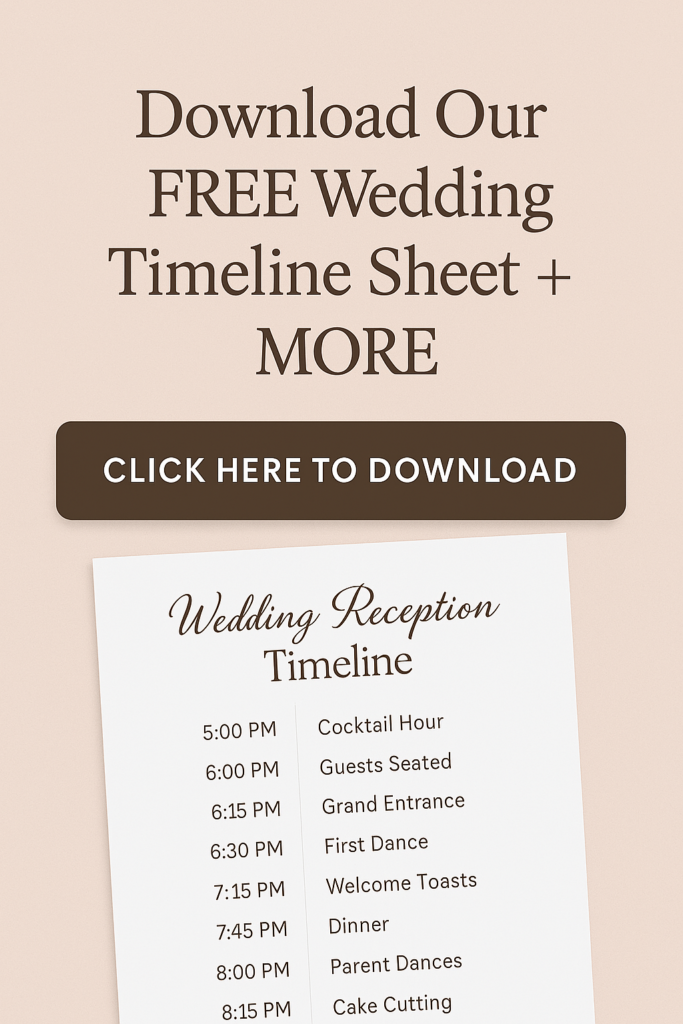
Contents
Overview of Typical Wedding Reception Events
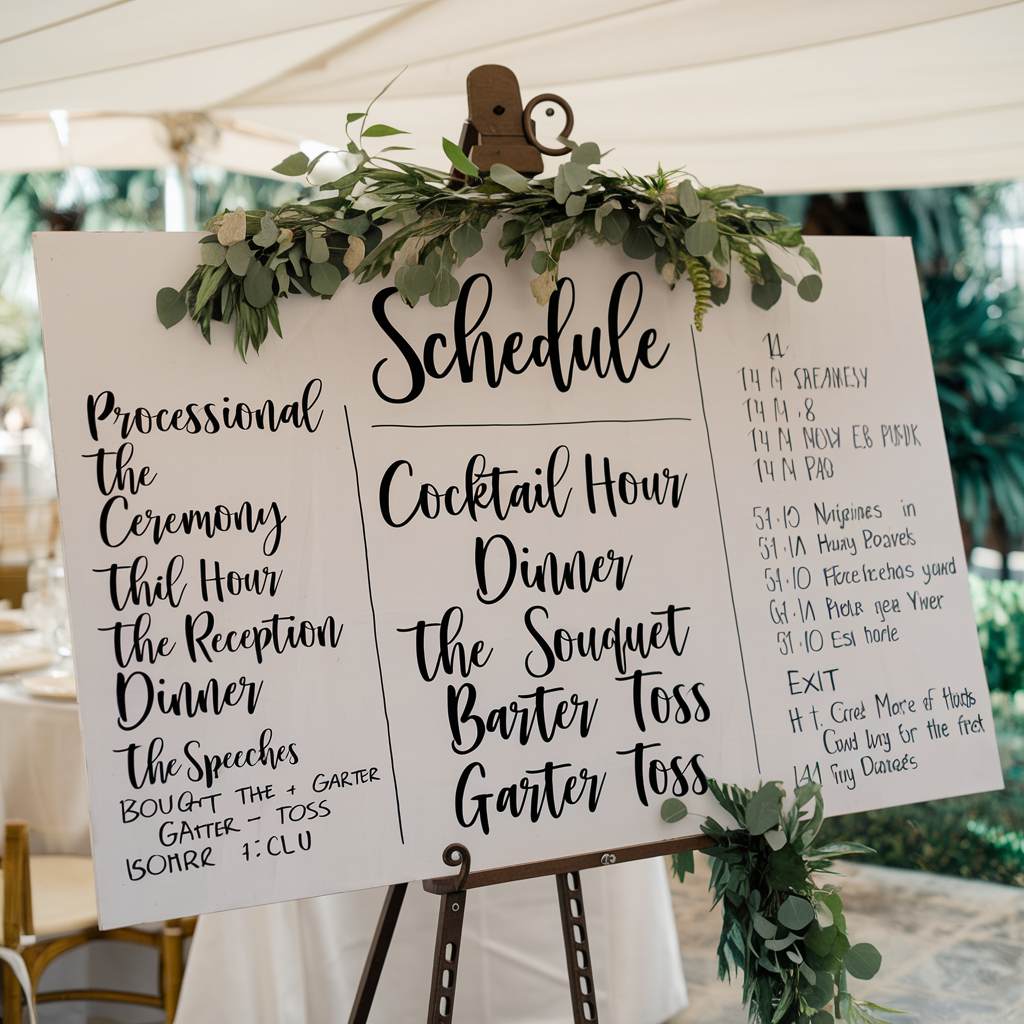
The reception kicks off when guests arrive. This usually happens during photo ops and when guests grab their drinks and snacks during cocktail hour.
It usually lasts about 60 minutes during which the band or DJ plays soft music and people mingle and find their seats.
Grand Entrance
This is the big moment: The newlywed enters the venue. It’s a high-energy moment that sets the tone of the reception and how guests can relax and enjoy.
First Dance & Toasts
Many couples have their first dance right after entering the venue. Then the family and friends give a toast for 2-3 minutes while the best man and maid of honor speak first.
Dinner Service
Dinner typically runs for 60-90 minutes. This gives ample time for guests to enjoy the food and time while celebrating with the couple.
This time the couples will visit each table during dinner, have a few conversations, and dine with themselves or their closest family and friends.
Remember: Caterers require information on the specific time the dining should start.
Cake Cutting & Dancing
Cutting the cake comes next after the dinner. This sweet moment kicks off the dessert service.
The opening dance floor comes after. Parent dances often happen first then they continue with opening the dance floor for everyone. Most receptions end with a final song and a send-off.
Remember – this is just a basic outline. Feel free to change it according to your preferred style. Some skip traditions or add cultural elements if you want. It’s your day – make it yours.
Pre-Reception Planning
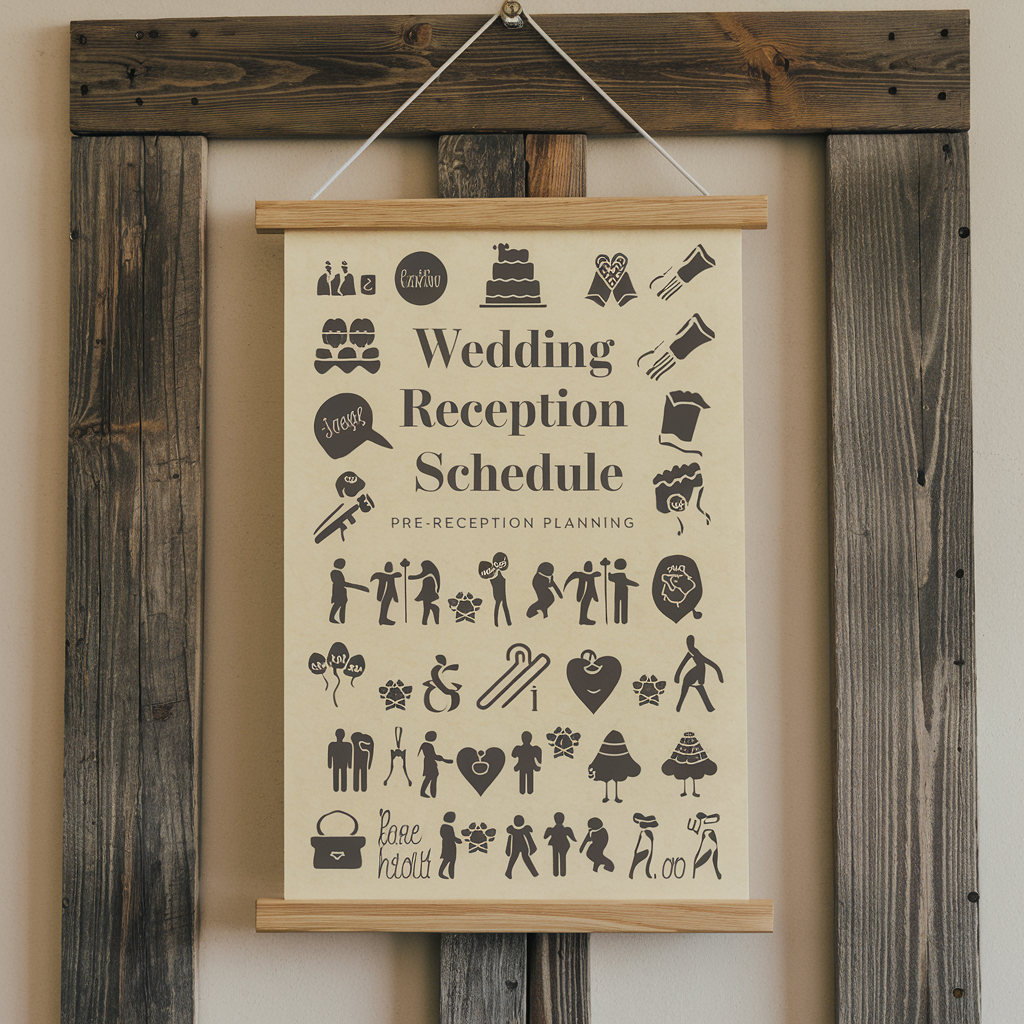
Planning early makes a difference. Most professionals suggest starting the wedding reception plans about 6 to 12 months earlier. Start by making an easy checklist of what’s to be done and when. This keeps track of everything from start to end.
Have a specific budget and ask how much you are willing to spend. Then allocate efficiently. This number will guide every choice.
Be sure to think about the atmosphere you want for your reception. Lively? Romantic? Laid-back? This vision helps you choose a venue, a meal, and music that fits together.
Timing matters a lot. Most receptions last 4-6 hours. Sketch out the schedule for when things will happen like cocktails, dinner, first dance, etc. This blueprint keeps the flow steady and working smoothly.
Coordination with vendors
A good vendor talks save massive headaches. Pick vendors who align with your vision. Meet them face to face if you can. Vendors become more trustworthy once you’ve shared the same vision.
Make one clear timeline and share it with all vendors. Communicate the arrival time, set-up time, and each part of the reception.
When should the DJ play the special song? When will food be served? How long will the dance last? All these details should be in writing.
Choose a point person – someone who is neither you nor your partner to communicate with the vendors. It can be a friend, your planner, or a family member.
A wedding planner shared that individuals who communicate with all suppliers through a group chat or email thread have 40% fewer issues on the day than those who don’t.
Venue setup and logistics
Visit the venue at least twice before the big day. This helps in spotting any issues that need fixing.
Think about how guests will move through the space. Where will they enter? Where will they eat? Where will they dance? The flow should feel natural instead of cramped.
Design a layout showing the positions of the booths, the bar, the dance floor, the buffet table, and other essential features. Share it with the venue staff and vendors to ensure everyone knows the setup.
The Venue Association said: “Power issues cause one in four technical problems at receptions.” Don’t forget the DJs, bands, and photo booth lighting outlets. Figure out where the outlets are or if extra power strips or extension cords are needed.
Remember: Have an alternate plan in mind in case the weather takes a turn. A Plan B is a reassuring and calming idea even when rain seems unlikely.
Arrival and Cocktail Hour
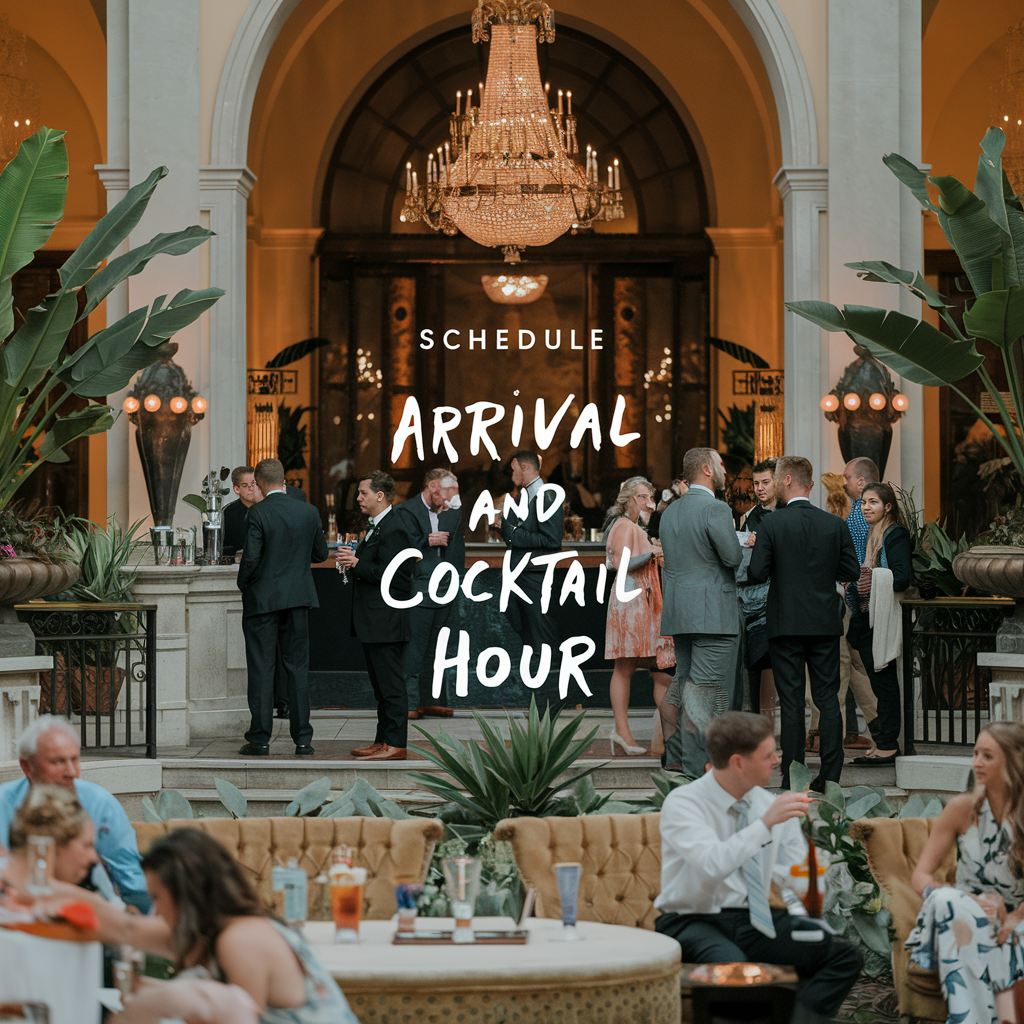
The arrival time is of the essence as guests show up at different times. Some come early while some run late. So make sure to put the invite time like arriving 30 minutes before the actual ceremony; this buffer helped everything run smoothly.
Guest arrival and seating arrangements
Make a big seating chart with readable fonts and a clear background and put it near the entrance. This keeps the tab clear and finding the assigned seats easier.
Seat families together when you can. Put older guests away from speakers. Keep kids close to exits for quick bathroom trips. These small choices make a big difference.
Ask the ushers to help lost guests. They should know the layout and who sits where. Good ushers make arrivals smooth and stress-free.
Cocktail hour setup and flow
Cocktail hour happens after the ceremony. It marks the start of the drinking time and Hors d’oeuvres. Most professionals say 45-60 minutes works best for cocktail hour.
Place food stations and bars on opposite sides of the room. This stops crowding and helps people move around. There’ll be no queue as guests spread out.
Have enough bartenders. One per 50 guests keeps lines short. Long bar lines are guests’ number one complaint at weddings.
Play not too loud background music. People want to talk; not shout. Make sure to also double-check if the venue has enough places to sit for roughly a quarter of the guests. Some people especially older folks need to sit down.
Seating guests for dinner
Begin ushering people to their seats 30 minutes after cocktail hour. The DJ or band leader can announce that dinner is about to kick off.
This time the guests find their table numbers on the seating chart. Each table has its place cards to reduce the confusion on where to sit.
A study by The Knot revealed nearly 75% of couples use some sort of plan for the reception dinner to avoid the chaos of everyone sitting wherever they want.
Dinner service timing and coordination
Most dinner services take about 45 minutes to an hour. It can change depending on the guest count and type of service. Buffets might be faster than plated meals but they can also create lines.
Work with your caterer on the timing – they know best. A good rule of thumb: plan for 45 minutes for under 100 guests then add 15 minutes for each 50 guests after.
Have your DJ play mellow tunes during the dinner to set a nice ambiance. The catering manager and venue coordinator need to communicate this to keep the courses running on time.
If toasts happen during dinner then schedule them in between courses. It gives some time to clear the plates and prepare the next dish. Most wedding planners suggest scheduling the first toast once everyone has their food in front of them.
Key Reception Events

The party begins after saying “I do.” It’s when the reception of events took place.
Introduction of the couple
The DJ or MC will ensure everyone is ready for the couple’s entrance. This usually happens after guests are seated.
It begins by saying “For the first time as a married couple, please welcome…” and then the couple walks in as the crowd claps for them.
Pick a fun song for this moment. Keep it short – most entrances take around 3-5 minutes.
First dance and parent dances
The first dances come before or after the dinner. It is a special moment when couples enjoy being the newlyweds.
Most couples dance lasts about 2-3 minutes. Parent dances usually follow. They may be either a bride with a father, a groom with a mother, or both at the same time – takes about 5-10 minutes.
Toasts and speeches
Speeches add a heart to the reception. The best man and maid of honor often speak first. Parents might say a few words too. The couple can also thank guests at the end.
Most toasts last 2-3 minutes each. Too long makes the guests feel restless. Keep it short but meaningful.
Wedding planner Sarah Johnson said: “The best toasts are short and sweet and speak from the heart. Schedule toasts during dinner to use time well. Let speakers know in advance when they’ll be speaking so they can prepare.”
Entertainment and Dancing
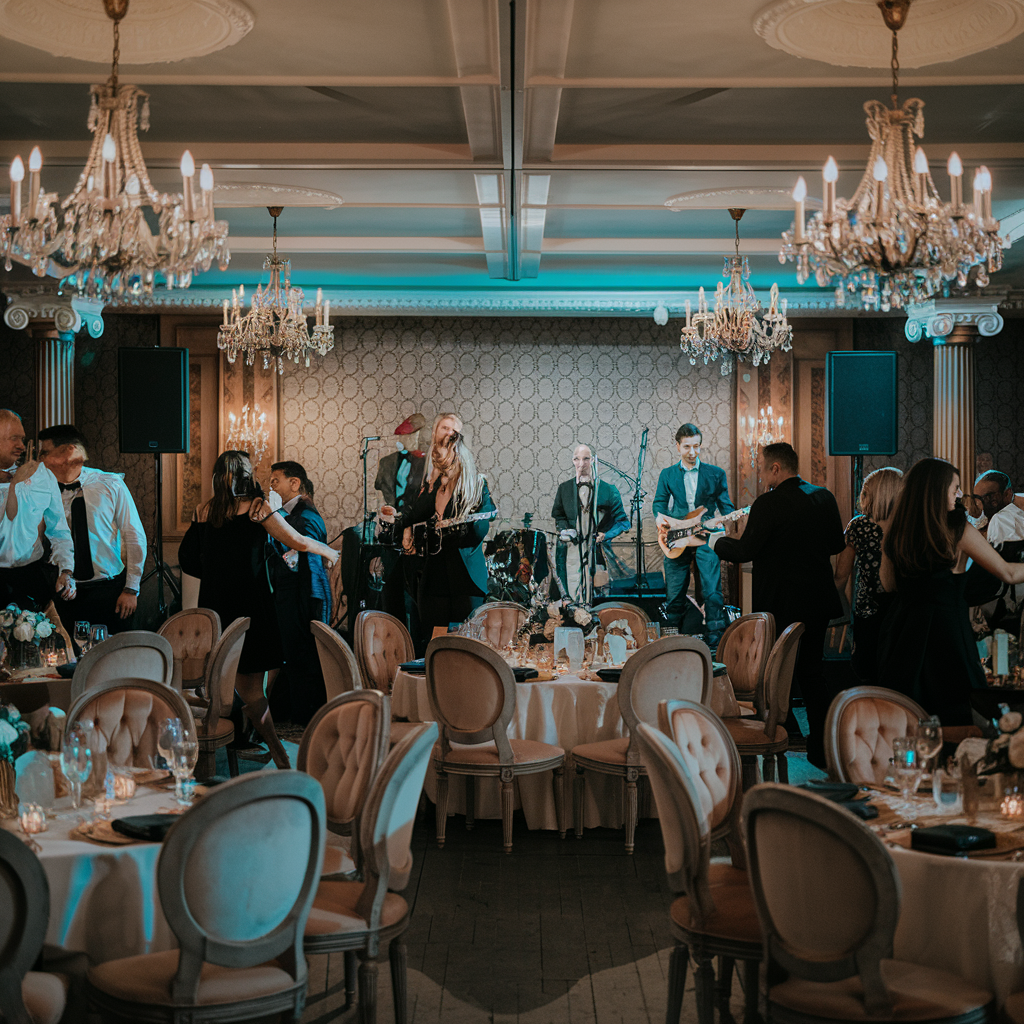
A carefully curated schedule of events keeps the fun flowing without any awkward gaps. It’s simple – timing is everything.
Music and Entertainment Schedule
Both DJ and band should have a clear plan on when to play what songs and their timing. Here are some tips:
- Use soft background music during the cocktail hour.
- Use a high-energy song for the wedding entrance.
- The first dance should take place right after the wedding entrance.
- Have a welcome toast after the first dance.
- Dinner music: Something calm to allow people to talk.
- Cutting of the cake happens right after the parents dance.
- Have at least 2-3 speakers to lead the toast.
- Let the DJ know they can’t miss songs and do not play.
Open Dance Floor Timing
Most guests can’t wait to dance. The timing must be good to have a lively moment. Here are some suggestions on the dance floor timing:
- Start the dance floor after the main events (e.g. dance, cake-cutting, or toast).
- Start with songs that will get people dancing.
- An open dance floor should last around 2-3 hours.
- Have the DJ throw in a slow song every half hour so everyone can catch their breath.
Cake Cutting and Desserts
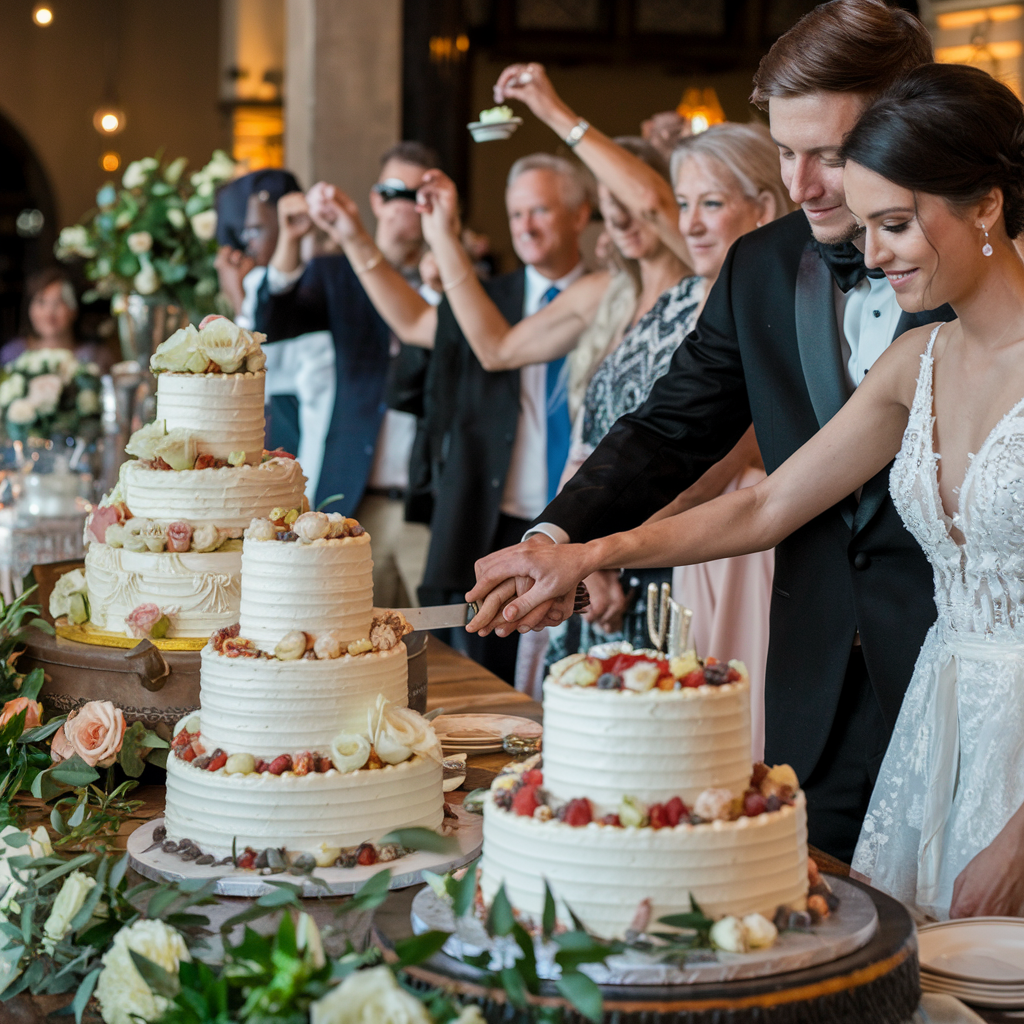
Ensure the cake-cutting ceremony is not rushed as it signifies that formal dining is over and the party can finally commence. Make it memorable for the newlywed and the guests.
Timing for cake cutting ceremony
Most cake-cutting starts about 1-2 hours after the dinner. This works well as guests would have finished eating by then.
Let the DJ or band announce to get everyone’s attention so they don’t miss this moment. Ask the guests to gather around the cake table and take some lovely pictures.
Some couples prefer to cut the cake right after dinner while others do not. There’s no wrong time – pick what works for your flow but don’t wait too long when guests are getting ready to leave.
Dessert service and alternatives
The venue staff will now take the cake slices for the guests. This usually takes about 15-20 minutes. They can either serve cake to guests sitting down or set up a dessert station where guests help themselves.
Others also have different dessert alternatives like donut walls, pie stations, ice cream bars, and cookie tables. It’s possible to combine the two – have a cake and other desserts for guests.
Remember: Make sure to ask your caterer to set up a dessert table that’s out for the rest of the night for an after-dinner dance party. This lets guests snack on sweets when they need a break from dancing.
Reception Closing
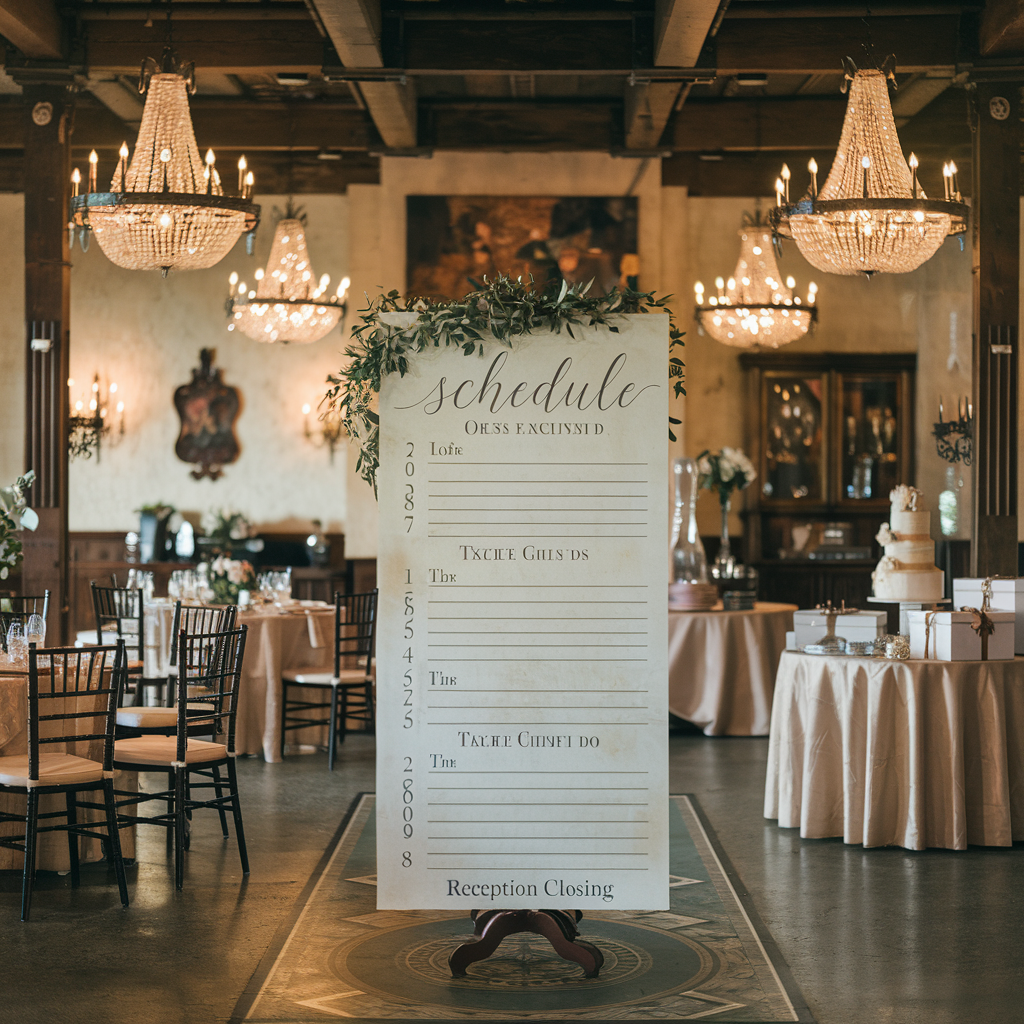
The end of our party needs should be taken care of properly as most receptions last 4-6 hours.
The DJ can make the last call at the bar. Try turning the lights up just a bit and playing slower songs. This lets guests know that the evening of fun and revelry is coming to an end without anyone saying it.
Final Dance and Couple’s Exit
The last dance is special. Pick a song that means something to you both. Some couples want all guests on the floor. Some couples like musicians to announce the leaving of guests for some private moment.
The same goes for the exit- think about what fits you. Sparklers look amazing in photos. Bubbles work well too. Ribbon wands make less mess.
Emma Lee shared “The exit creates some of the most fun and candid moments of the entire day.”
Remember: Communicate the exit rules as some venues don’t allow sparklers or confetti.
Guest Departure Logistics
Help the guests get home safely. Arrange a transport if the venue is away from hotels or set up a ride-share pickup spot. Shuttle buses work great too.
Have the room info for out-of-town guests. Maybe print small cards with addresses and phone numbers. Let guests know the check-out time for the following day if you’ve blocked hotel rooms.
Have a friend or family member gather your presents and cards for you. You’ll be tired and ready to start your honeymoon. Having help with all these details means you can leave stress-free.
Frequently Asked Questions (FAQ)
How early should wedding party start getting ready?
The morning timeline should include a wake-up call at least 5-6 hours before the ceremony for hair, makeup, and glam sessions. Bridesmaids typically need 1-2 hours while the bride may need 2-3 hours with beauty services artists. Breakfast during the wedding party can set a positive tone and reduce stress before the day’s tasks begin.
What wedding budget mistakes do most people make?
The biggest mistake couples make is not tracking all expenses in a spreadsheet from the starting point of planning. Lea Stafford of Stafford Creative + Co. in Northern California shared that half of couples exceed their budgets by failing to account for things like service fees and tips. Creating separate interest savings accounts for wedding-related costs helps keep everything on track.

I am a free-spirited author with the focus of relationships, travel, mental health, and womanhood. I am still new to the writer scene but am excited for the journey that awaits.